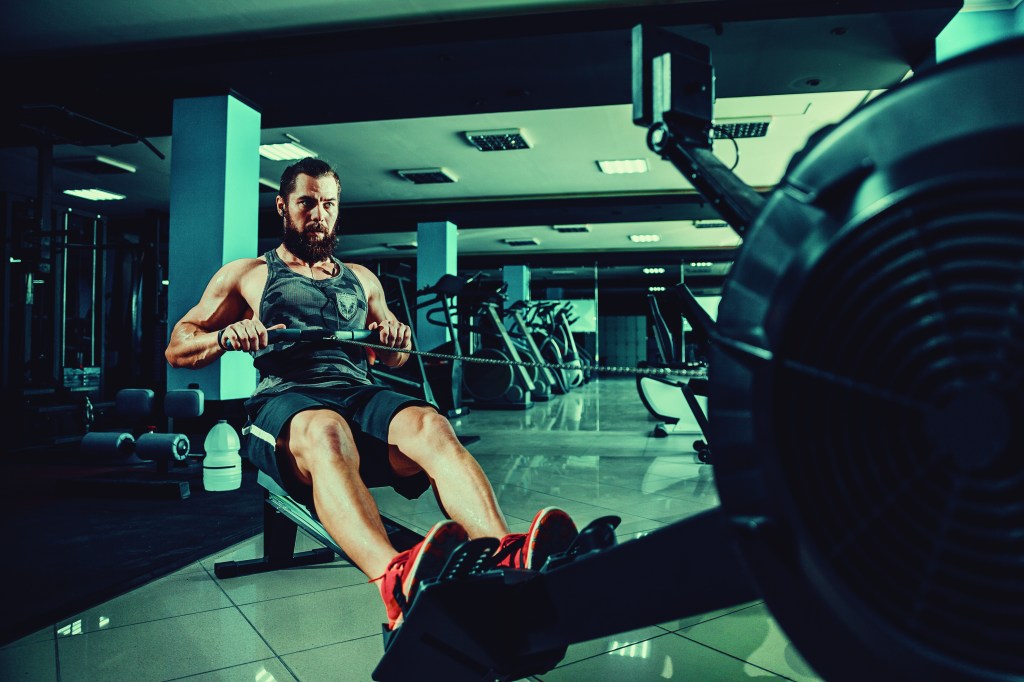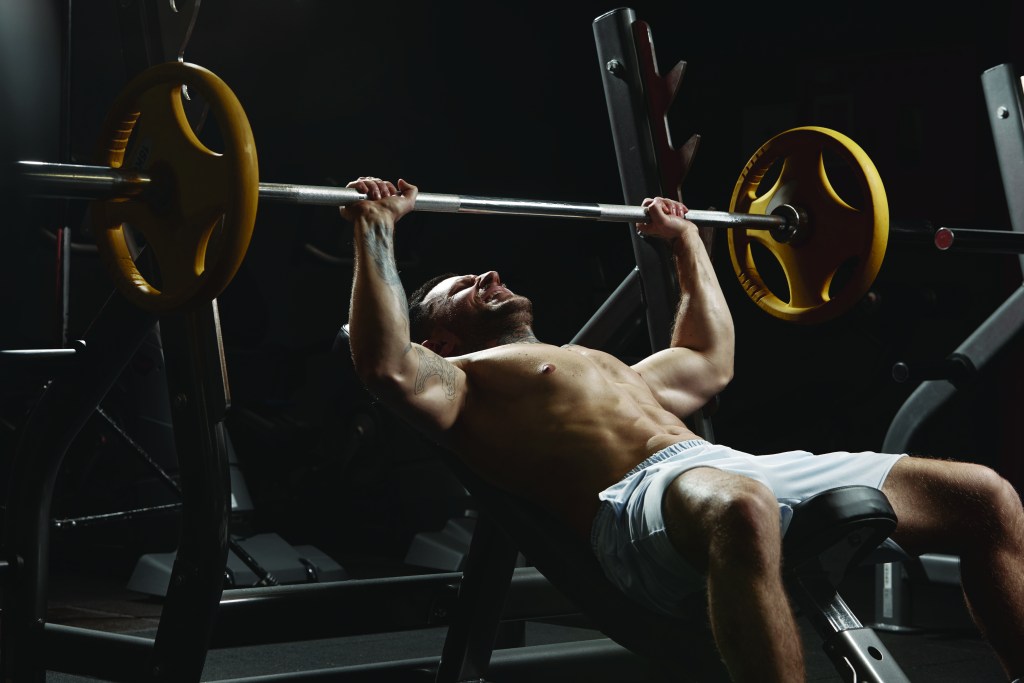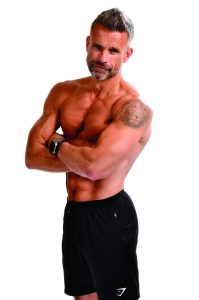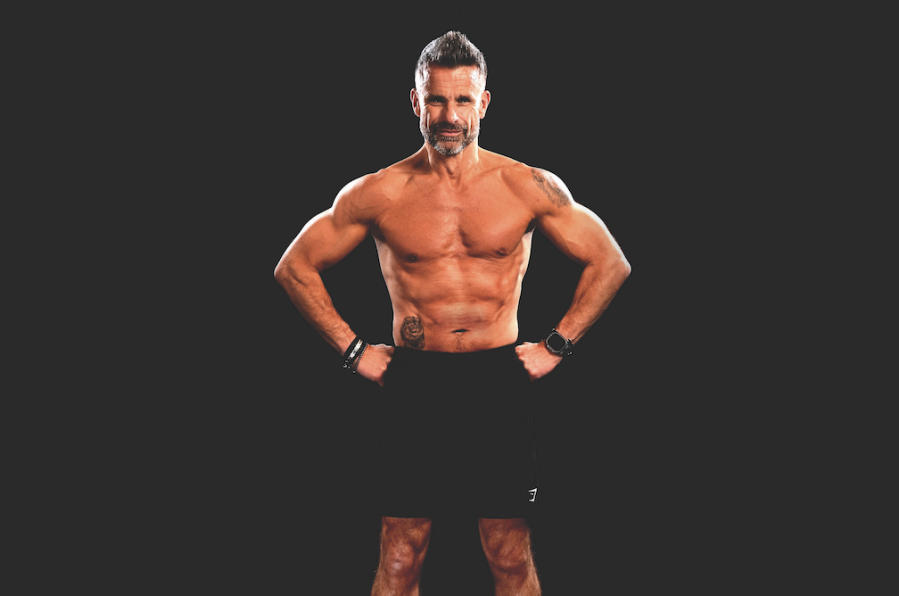Don’t let sniper’s alley take you by surprise – take the right approach to building fifty-plus fitness and bulletproof your body
Words: Jason Smith
Many people think turning 50 means slowing down. I believe it’s the perfect time to turn up the dial and and the belief in building fifty-plus fitness.
For many men the idea of getting fit in midlife feels unattainable and overwhelming. It’s too late. The ship has sailed and it’s pointless trying. But the truth is getting or staying fit and strong after 50 might be the most important investment you make in your health, your happiness, and your future longevity.
There are many examples of what can be achieved after 50.
Take Ralph Fiennes. At 62, he’s transformed himself from a middle-aged priest in Conclave to a battle-hardened King Odysseus in The Return. The strength, endurance and lean muscle he’s built defies ageing stereotypes and challenges our limiting belief that it’s all too late.
Or take me—after years of not training, putting on weight and feeling sluggish and listless, I rebuilt my body, self-cured health issues like hypertension and high cholesterol and improved my mental health as I turned 50.
Now 55 I have more energy, clearer focus, and a confidence I lacked during my thirties and forties.
The good news is It doesn’t take long to see meaningful change. In as little as 8 to 12 weeks men in their 50s can build visible muscle, lose fat, and drastically improve their energy and mood. If they take the right approach.
But it’s different working out in midlife. To get the best results we need to focus on working smart with targeted effort that maximises your results from the time you invest. You don’t need hours in the gym. Twenty minutes a day is enough if you’re working smart. The key is consistency not sporadic, long sessions.

10 Things to Know About Getting Fit After 50
The Challenges of Midlife — and How to Beat Them
Yes, things change with age. Testosterone drops, recovery slows and muscle mass declines by up to 1% a year if you’re doing nothing.
But these aren’t dead ends or showstoppers—they’re just considerations.
Resistance training helps boost natural testosterone, and compound movements stimulate more muscle fibres and increase your metabolism.
The key is to start light, focus on your technique and use the time-tested approach of progressive overload to keep increasing the challenge as your body strengthens.
Always focus on your form rather than the amount you lift. A controlled tempo with full range of movement will have a far greater effect than struggling with weights that are too heavy for you.
Hidden Benefits
It’s not just about how you look. Strength training improves insulin sensitivity, protects joints, boosts libido, and helps regulate mood.
Cardio enhances heart health, stamina, and stress resilience. Together, they form a one-two punch for overall wellness and building fifty-plus fitness.
Many of my clients say they feel sharper now than they did in their thirties. This is about function, not just aesthetics.
Hybrid Training Works Best
Hybrid training, combining strength and cardio, is the most effective way to build a lean, athletic physique while improving heart health, strength and mobility.
Your weekly program should include three strength sessions, two cardio workouts (running, cycling, rowing, interval training etc), and one mobility-focused session.
This will provide a holistic approach to your fitness and accelerate results by keeping your body guessing and your mind stimulated.
Strength Workouts That Deliver Fast Results
Prioritise compound moves: squats, deadlifts, bench press, rows, overhead press. These exercises use multiple muscle groups thus maximising your return on investment.
Using supersets or giant sets, where two or more exercises are grouped together and performed immediately after each other, will save more time and increase intensity.
They will get your heart rate up into fat burning zones and work up a sweat.
Combine exercises that target opposing or different muscle groups, such as a squat, bench press and rows.
Your leg muscles will rest and recover whilst performing the upper body exercises and your upper body will rest whilst performing the squats.
But your heart rate will increase as you continue to use energy, giving you similar fat burning benefits to those associated with cardio workouts.

Top Muscle-Building Exercises
To accelerate results, focus on big compound exercises such as those listed below.
These exercises will accelerate muscle gain and fat burn as your metabolism responds.
- Squat variations/ Leg Press
- Lunge variations
- Deadlifts
- Pull-ups and rows
- Bench press and Flys
- Overhead press
- Loaded carries such as a Farmers Carry
Burn Fat and Strengthen your Heart with Cardio
Cardio sessions can support recovery and accelerate fat loss.
Walking at pace, running, rowing, incline treadmill, elliptical (cross-trainer) or cycling are all great choices.
Aim for at least 30 minutes of steady state cardio and 20 minutes of intervals. Perform your cardio on separate days to strength training for best results.
The Importance of Rest and Sleep
In midlife, rest isn’t a luxury. It’s a necessity. Train the body hard for sure but recover adequately.
Remember, the body doesn’t strengthen during your workout, it does so as it repairs during recovery afterwards. If you skimp on recovery, you’re also limit the results you’ll get.
Aim for 7–9 hours of sleep each night and schedule rest days to allow your body to rebuild muscle and restore hormonal balance.
Don’t Skip Mobility
A tight, rigid body is a fast track to injury.
It will also limit your range of movement in strength exercises and leave you feeling sore after cardio.
Investing time in improving your mobility brings huge benefits now and in later life. Not every man will like the idea of yoga, but I’ve found a 10-minute morning flow routine incredibly effective. I recommend attending classes, even if it’s only for a short period, as you will learn the poses and stretch the muscles more effectively.
It will help you lift better and safer, move more freely, and avoid setbacks whilst keeping you agile in years to come.
Warm Up and Cool Down: The Start and Finish of Every Great Workout
In midlife, how you start and finish your workouts can make or break your training progress.
Warming up properly increases blood flow, primes your nervous system, and prepares your joints for movement. A good warm-up can prevent injury and improve performance, especially if you’re going to be lifting heavy or performing high-intensity intervals.
A great warm up will include dynamic movements: bodyweight squats, lunges, arm circles, and mobility drills specific to your workout.
It doesn’t need to take long; 5 to 10 minutes is enough to raise your core temperature and activate key muscles.
I practice for every lift I am about to perform. I build mind-muscle connection by replicating the movement without any weight for 5 or 6 slow reps.
This ensures I perform each exercise fully and properly once the weights are in my hands.
Cooling down is just as important.
Gentle stretches, or foam rolling will reduce muscle soreness, lower your heart rate, and kick-start your recovery.
It signals to your body that it’s time to shift fromstress to rest, thus accelerating the repair process.
How to Structure Your Training for Maximum Results
A well thought through program will accelerate your results.
You’ll build a routine that forms a habit, stay stimulated and follow through on days when you’re feeling tired or time is lacking.
This is the program I followed to make a fast impact
- Strength: 3x per week – Use compound moves in a full body workout to work the muscles more often. Leave at least 48 hours between each strength workout.
- Cardio: 2x per week -Use longer moderate-intensity sessions or shorter intervals if time is short
- Mobility: A daily 10-minute stretch routine or yoga once a week
Getting serious
Midlife is the time to take our health and fitness seriously, particularly if we want to protect ourselves from the effects of ageing.
Based on average mortality rates if you’re currently 50 you have around 30 years of life left. How do you want those years to be? They could be your best years, yet feeling strong, confident, and with the energy to enjoy every day to the full.
So, start today, right where you are, build momentum and trust the process. The only thing you’ll regret is not starting sooner.

ABOUT JASON
Jason Smith is a 55-year-old personal trainer and owner of Fit in Midlife. He specialises in helping midlife men improve their physique, health and fitness. Jason started working out at 50. Within months he lost 25kg in weight, cut body fat from 28% to 10% and built significant muscle mass.
Jason coaches clients in person and online and can be found at @fitinmidlife on Instagram, TikTok and Facebook.






